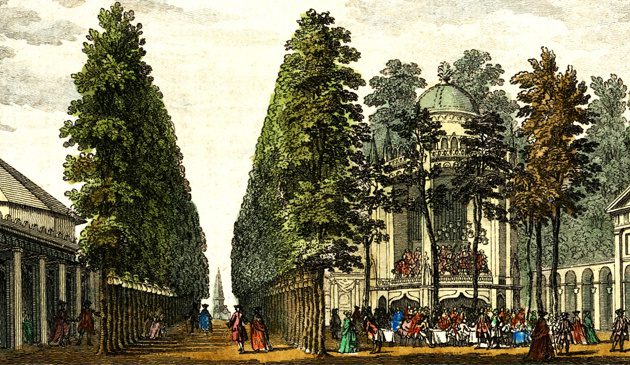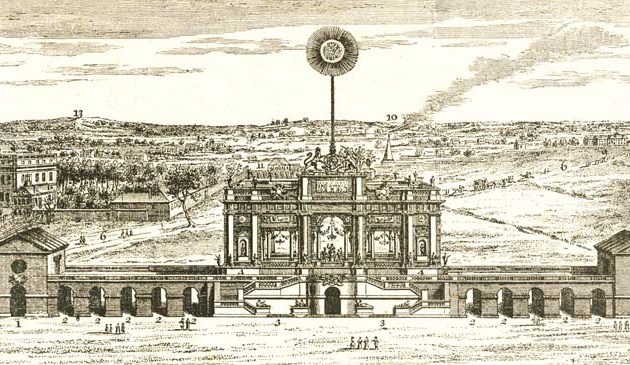Crime and policing in Georgian London

In William Hogarth’s mid-18th century ‘Industry & Idleness’ series of prints a suspected criminal is brought before a Justice of the Peace in the City of London. The accused, behind the bar, begs the magistrate for mercy while his former partner in crime swears on the Bible as he gives evidence against him, and the court official (with the long stick) dismisses the pleas of the weeping mother.
Despite the existence of marshals, constables, watchmen and beadles, the business of apprehending criminals was largely the responsibility of the general public. Anyone who witnessed a crime was obliged by law to apprehend the perpetrator, giving chase if necessary. In order to attract immediate help during the 18th century it was usual to shout “stop thief!” (or “murder!” in the case of an assault). When a constable called a ‘hue and cry’ bystanders within ear-shot had to join the chase. It was not uncommon for a group of people to pursue pick-pockets, street-robbers or assailants through the streets. If the suspect was caught they may be arrested and handed over to a constable but it was not uncommon for the pursuing mob to carry out instant punishment, or in other cases to set them free if a plausible story was forthcoming. A ruse sometimes used by villains was that they would shout “stop thief!” in order to put the chasing pack off the scent or to turn the tables on the victim.
There were many occasions when soldiers or horse guards were called out to control rioting, to prevent rescues during public hangings, to round up groups of thieves, or to prevent looting during fires.
An important role in the criminal justice system was undertaken by the Justices of the Peace, a position that had existed since the Middle Ages. When an arrest was made by watchmen or constables, or whenever a criminal complaint was lodged by a member of the public, the suspect was initially brought before a JP, several of whom sat in each of the City, Westminster, Middlesex, and Surrey.
Justices of the Peace had the power of summary jurisdiction to punish those found guilty for a specified list of minor offences, with a fine, whipping or commitment to a house of correction. The number of these specific offences grew throughout the century as new laws were passed by Parliament. Offences for which a JP could convict included various types of vice, drunkenness and different kinds of disorderly conduct, selling ale without a licence, working on Sunday, swearing, vagrancy, disobedience by servants, some types of petty theft, assault, and vagrancy. Those suspected of more serious crimes were sent to prison to await trial by jury at the Old Bailey criminal court.
Justices of the Peace were selected from the leading men of property within each county. As crime and social disorder increased in London so too did the burden of this unpaid position and there was less incentive for honest and responsible gentlemen to take on the role. There was a gradual change of type of men putting themselves forward for the position during the 18th century, from gentlemen of property to merchants and tradesmen. The number of active JPs gradually decreased in London and it became more of a full-time role. In the first half of the century there was a general suspicion that those undertaking the work did so for their own personal gain and the term ‘trading justices’ came into use to describe them. The accusation was that deals were being done to send offenders to prison, with fees that prisoners were obliged to pay the prison warden divided between the gaoler and JP. Another form of income came from taking fees from those bringing a complaint to the court. Thomas de Veil, a Westminster magistrate between 1729 and 1746, was suspected by many of being in the pocket of the local brothels around Covent Garden. He was one of a series of Westminster JPs who are known as ‘court justices’ because they were partly paid by the government in return for providing intelligence and carrying out government instructions.
De Veil initially operated his court from a house in Leicester Square but later moved to Bow Street at Covent Garden. After his death his house was taken over by his successor, Henry Fielding. He made innovations in the way constables investigated crimes, leading to the creation of the ‘Bow Street Runners’ during the second half of the century when he himself had been succeeded at Bow Street by his half-brother John Fielding.
In the City it was the Lord Mayor and aldermen who acted as Justices of the Peace. Until 1737 they heard cases within their home, with the Lord Mayor sitting daily at his residence. With an increasing number and complexity of cases aldermen became reluctant to use their homes and after that date sessions were held at the Guildhall, London’s first magistrates’ court, with aldermen sitting in rotation.


